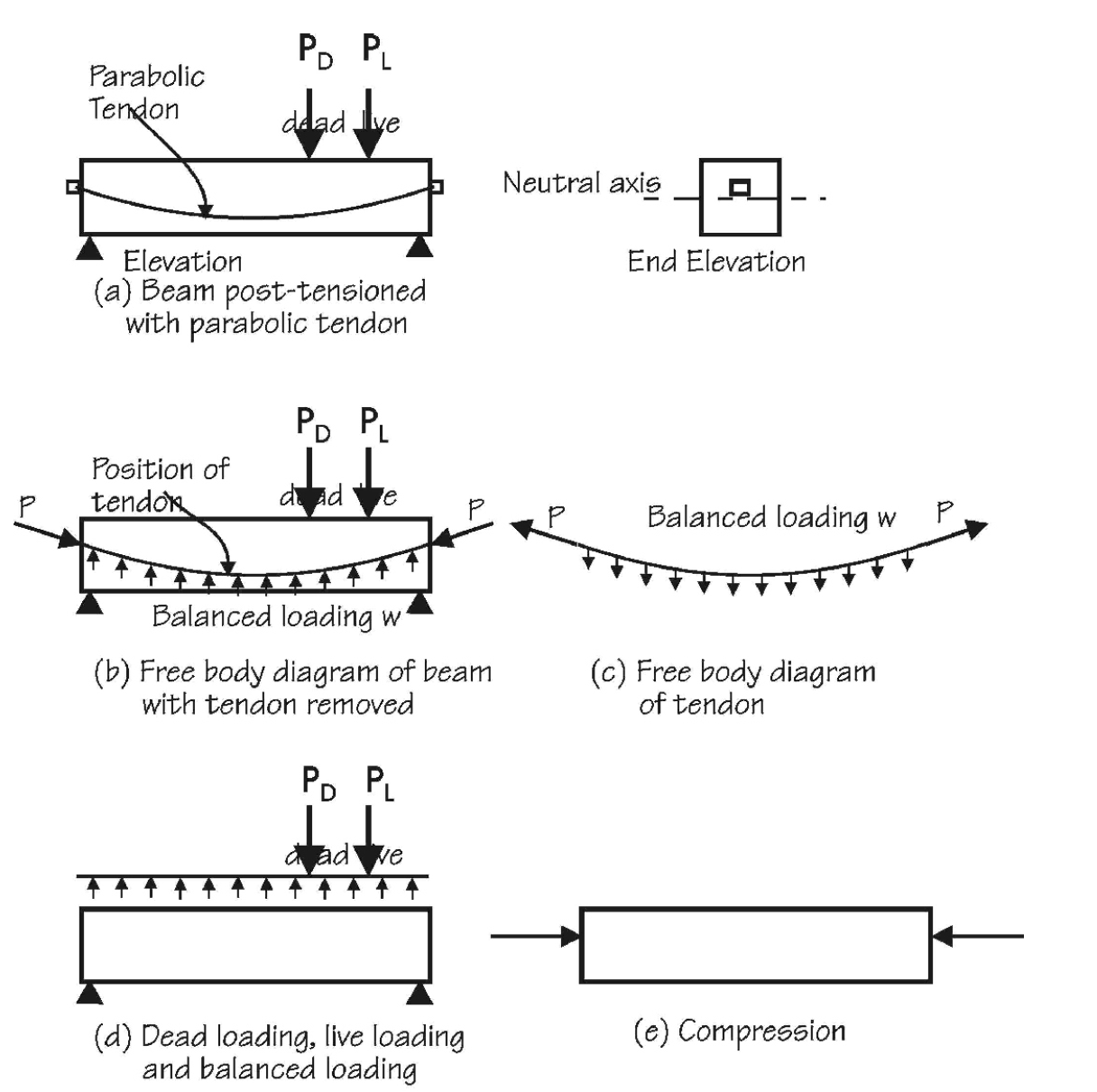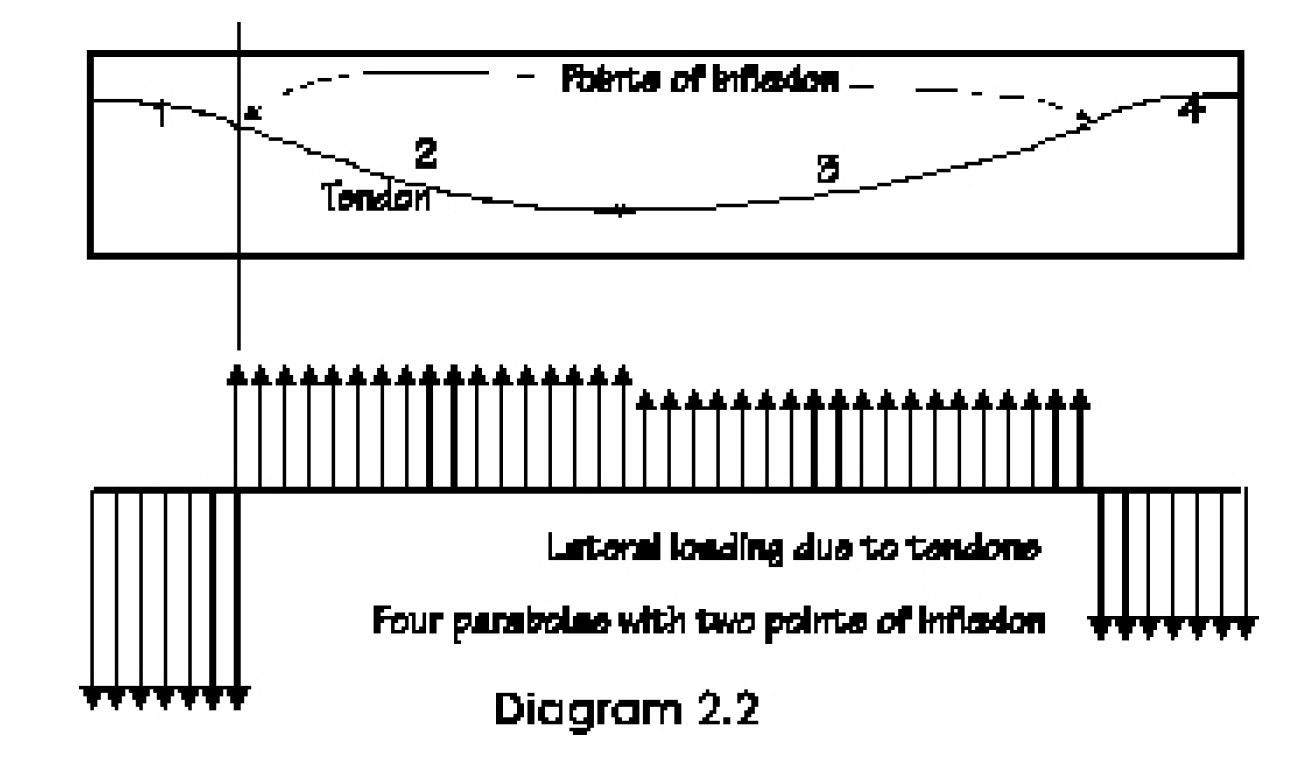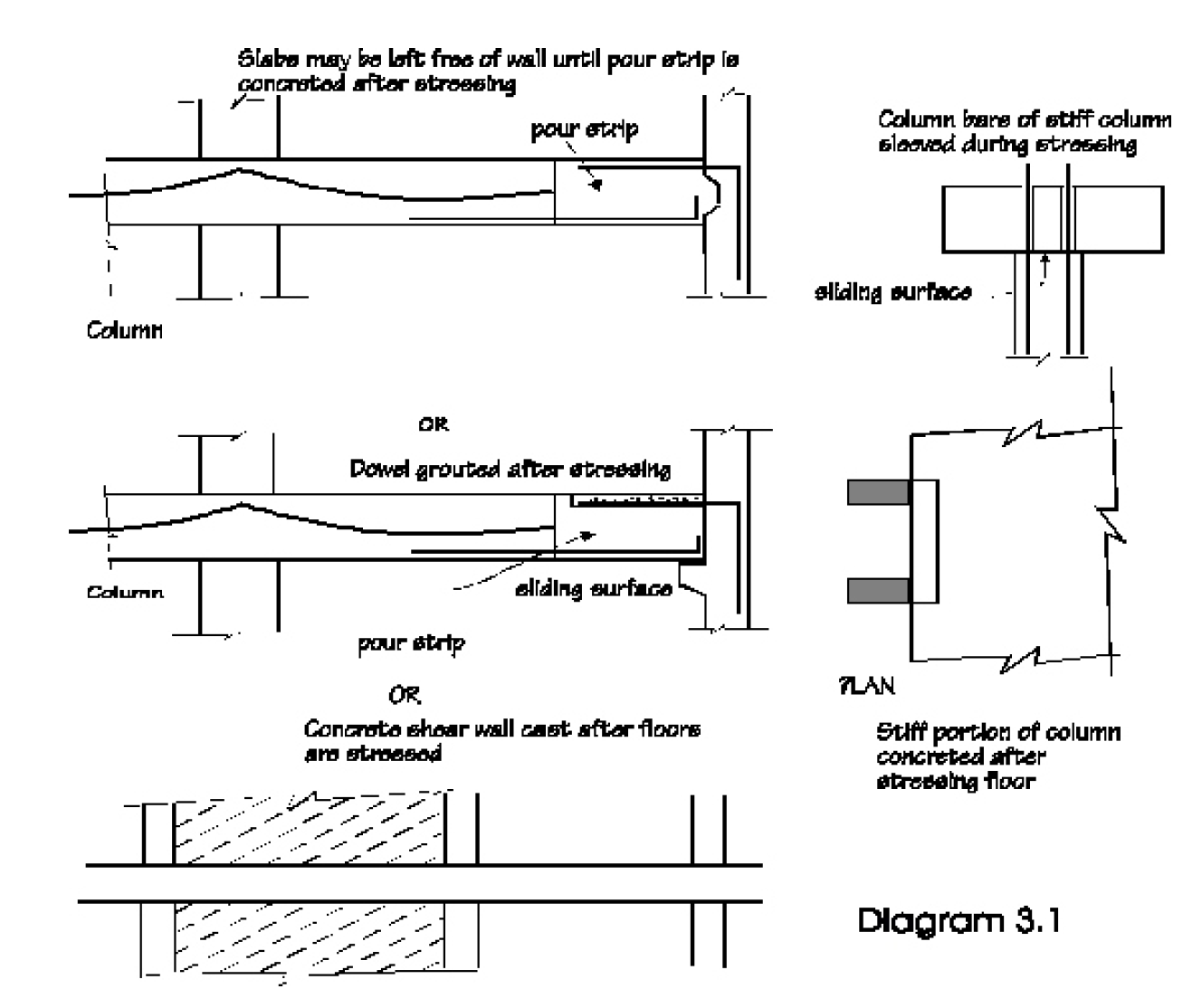Prestressed Concrete Flat Slabs - Design Methods
Prestressed Concrete Flat Slabs - Design Methods
1. Preliminary Manual Design
The method recommended depends on the load-balancing method made popular by Lin.
Prestressing is treated analytically by removing the prestressing tendon and replacing it by the equivalent forces that it
applies to concrete. (Diag. 2.1).

By taking reverse curvature of the tendon into account, the complete prestress loading diagram on the slab is derived
(Diag. 2.2).

The system may be described as follows:
1. Decide on column centres, concrete grade (usually 30 or
more) and preliminary slab thickness, as well as drops,
capitals, etc. Choose a preliminary thickness from
paragraph 3.2.2, and from shear considerations. The shear
will often govern, unless capitals or drops are used, and
should be checked first.
2. Decide on the amount of load to be balanced. (This is an
economic decision)
3. Using the maximum drape possible, decide on the
preliminary geometry of the tendon. From (2) and (3)
calculate the prestress force required.
For a parabolic tendon of drape h, length L, Prestress P,
the equivalent upward load is given by W = PL2 /8h and if
L and W and h are known, P may be calculated (see also
4.2).
4. Analyse the slab for Dead Load, Live Load (for pattern
loading see 4.1) and prestress load (use a preliminary
estimate for losses)
5. Calculate the working stresses at various points and
check for allowable tensile stress and deflections. It should
be noted that the limitation of tensile stress is not a good
way to limit cracking, but is acceptable for preliminary
design. Final design should be based on limiting
crackwidth.
6. Calculate the reinforcement required and check the
maximum compressive stress in the concrete for the
ultimate limit state.
7. Check the shear stress, and calculate the reinforcement required, if any.
8. Depending on the results of (5) and (6) it may be necessary to adjust the thickness and prestress, and perhaps to supply
additional non-prestressed reinforcement to control cracking or shear. Non-prestressed reinforcement is always required
over columns, and in external spans.
9. Check the prestress losses due to shrinkage, creep, friction etc. and adjust the prestress loading.
It should be noted that although the sample calculations take account of the variation in prestress along the length of the
structure, and of the effect of curvature of cables over the supports, it is sufficient for preliminary design to assume a
uniform prestress along the length of the structure (except where the prestress is varied by changing the number of tendons,
and to assume that the cables hang from the supports i.e. there is only upward distributed load from the tendons, and
downward point loads at the supports. (See
Diag 3.4) In deciding whether to vary the
number of tendons, it may be taken as a rule
of thumb that 7m of tendon is equal to the
cost of two anchorages.
Some designers make the above assumptions even for final design. Howeverit should be realised that one is designing the non-prestressed reinforcement for the
difference between the downward loads dueto permanent load and live load, and theupward load due to prestress. The differencebetween these quantities may be sensitive tosmall variations in either one.

» Tin mới nhất:
- Cách GHI – ĐỌC dữ liệu từ tệp tin trong ngôn ngữ Java (18/12/2024)
- Những Website Check Lỗi Ngữ Pháp Tiếng Anh Chất Lượng (18/05/2024)
- The writing process and assessment (18/05/2024)
- Những kinh nghiệm làm đồ án dành cho sinh viên kiến trúc (18/05/2024)
- Quyết định đầu tư chứng khoán và các mô hình nghiên cứu (18/05/2024)
» Các tin khác:
- Prestressed Concrete Flat Slabs - Introduction (17/04/2019)
- Tuyển dụng điện tử (17/04/2019)
- Nguồn tuyến dụng (17/04/2019)
- Một số so sánh giữa IAS và VAS (16/04/2019)
- CHU KÌ SỐNG SẢN PHẨM (P2) (16/04/2019)
- CHU KÌ SỐNG SẢN PHẨM (P1) (16/04/2019)
- KHỞI NGHIỆP: GÓC NHÌN TỪ CÁC SAI LẦM CẦN TRÁNH (P2) (15/04/2019)
- KHỞI NGHIỆP: GÓC NHÌN TỪ CÁC SAI LẦM CẦN TRÁNH (P1) (15/04/2019)
- Sự tự nhận thức (12/04/2019)
- Sự Giao tiếp (12/04/2019)













